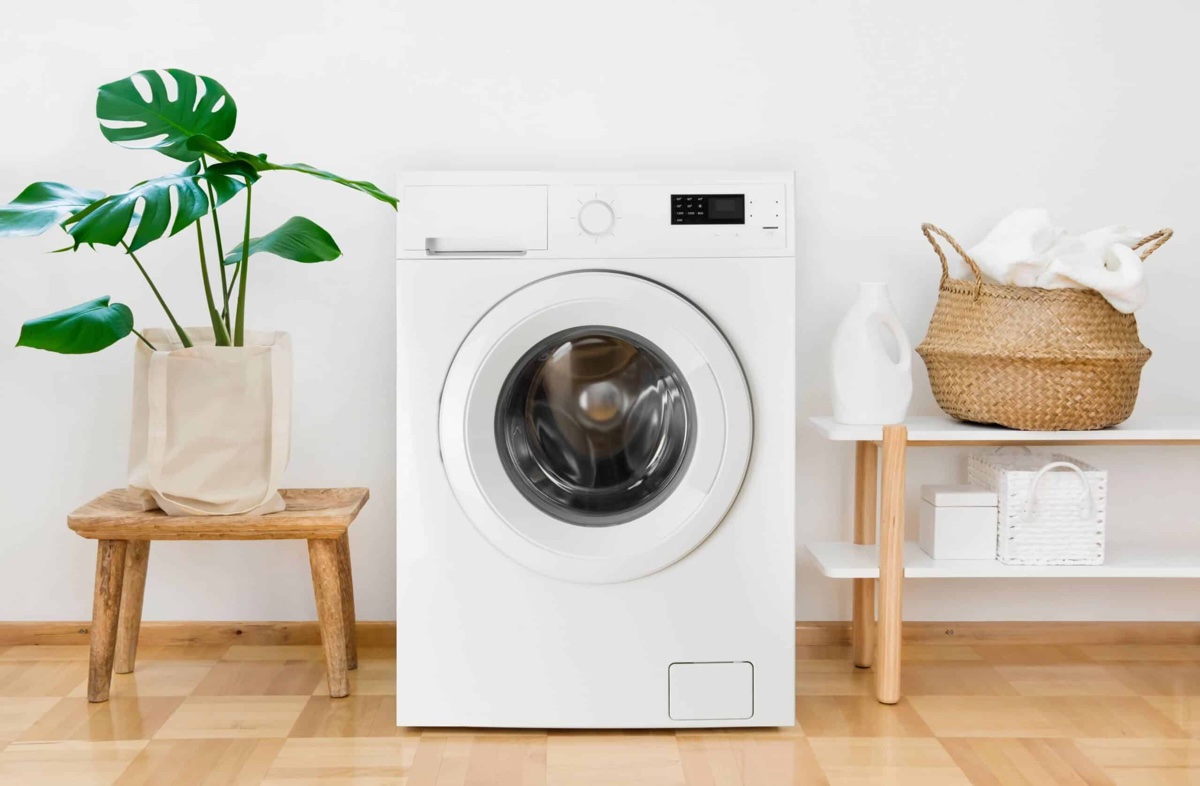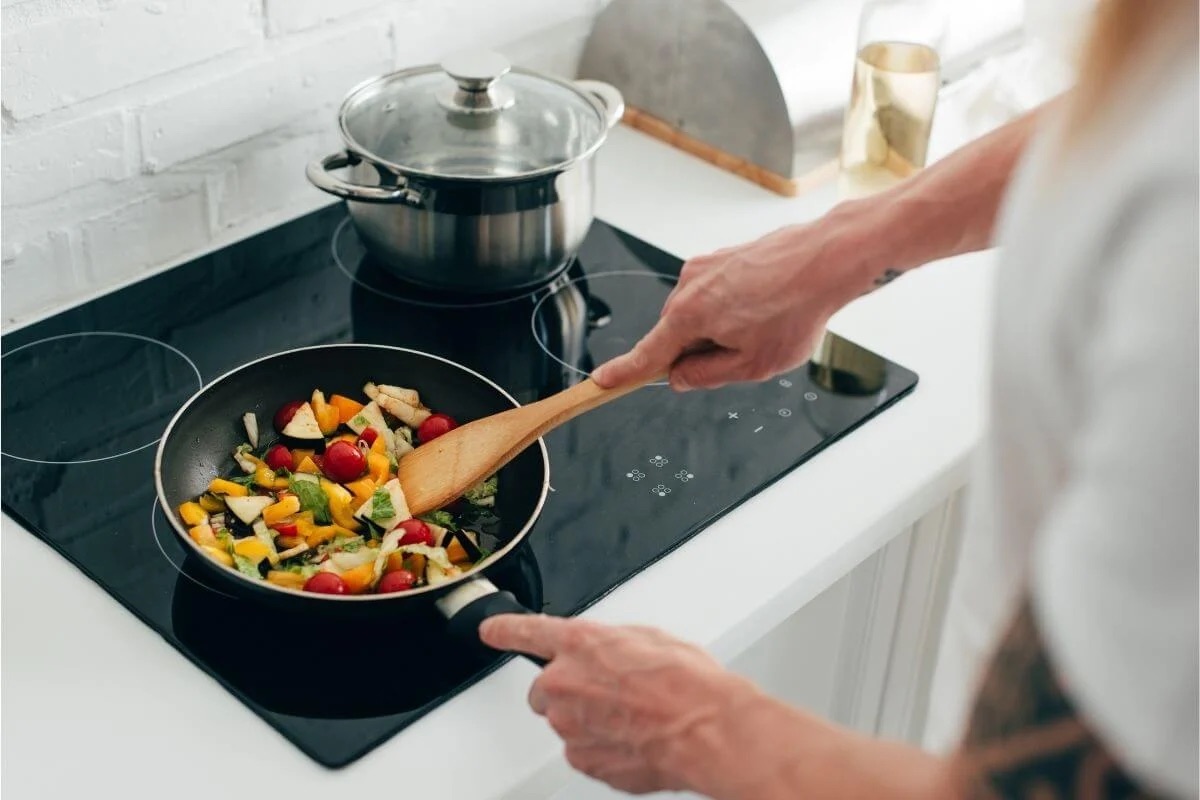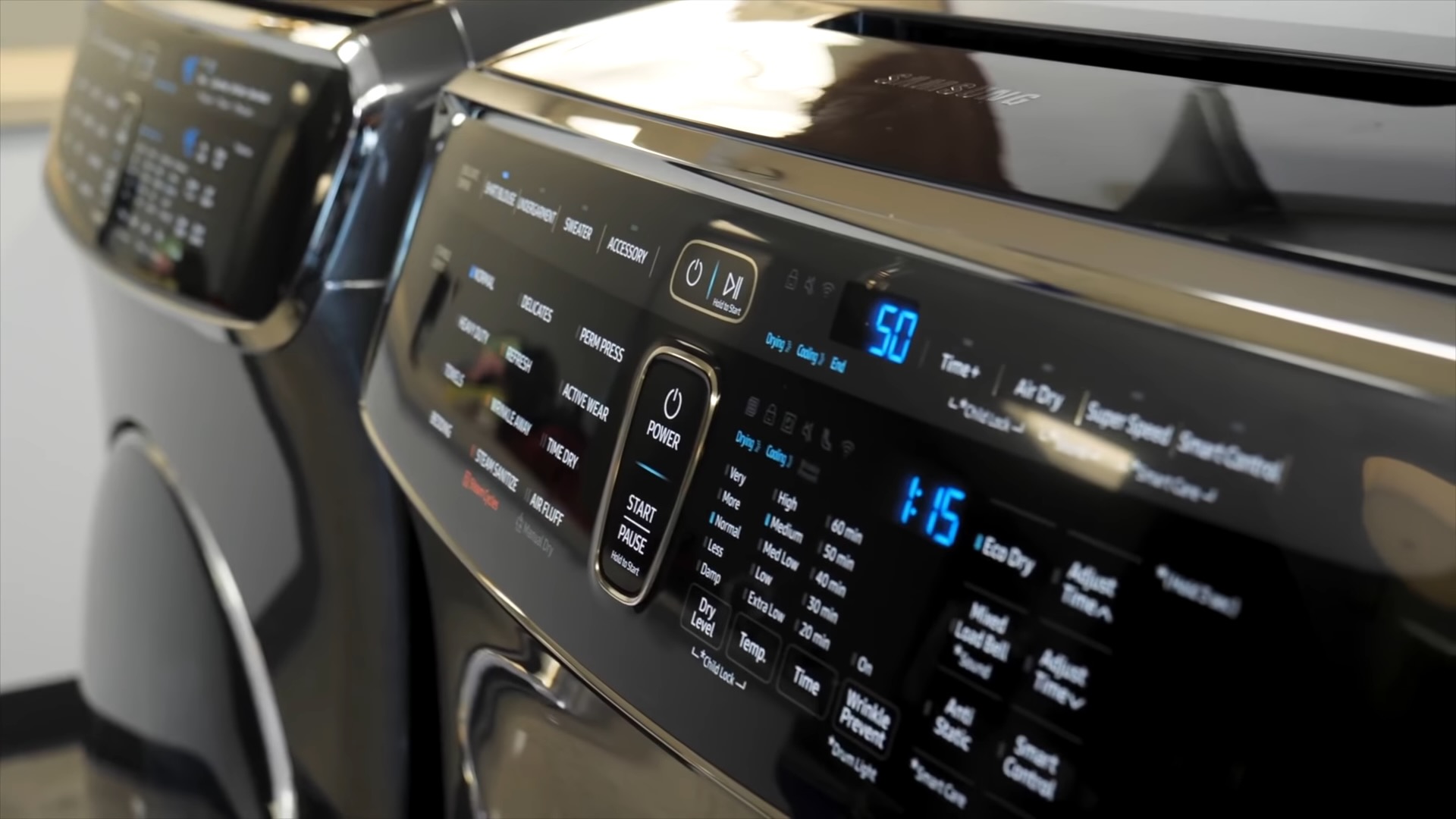

Articles
How Many Amps Does An HVAC Use
Modified: January 6, 2024
Learn about the electrical requirements of HVAC systems. Read informative articles on how many amps an HVAC unit uses and ensure your electrical setup is sufficient.
(Many of the links in this article redirect to a specific reviewed product. Your purchase of these products through affiliate links helps to generate commission for Storables.com, at no extra cost. Learn more)
Introduction
When it comes to heating and cooling our homes, HVAC systems play a crucial role. These systems are designed to provide us with comfort by controlling the temperature, humidity, and air quality in our living spaces. However, in order to operate effectively, HVAC systems require a certain amount of electrical power, measured in amps.
Understanding the electrical consumption of your HVAC system is important not only for managing your energy usage but also for preventing issues such as circuit overloads and electrical failures. In this article, we will delve into the world of amps and explore how many amps an HVAC system typically uses.
Before we dive into the technicalities of amps and HVAC systems, let’s take a moment to understand the basics of how these systems work.
Key Takeaways:
- Understanding the amp usage of your HVAC system is crucial for managing energy consumption, optimizing efficiency, and reducing utility bills. Prioritize energy efficiency to save costs and contribute to a greener future.
- Factors such as system size, temperature settings, efficiency ratings, and maintenance impact amp usage. Implementing energy-saving tips and consulting with HVAC professionals can help reduce amp usage and achieve energy savings.
Read more: How Many Amps Does Alexa Use
Understanding HVAC Systems
HVAC stands for Heating, Ventilation, and Air Conditioning. These systems are designed to regulate the temperature, humidity, and quality of the air in indoor spaces. They utilize a combination of equipment, including heaters, air conditioners, fans, and ductwork, to achieve optimal comfort.
An HVAC system works by drawing in air from the environment, filtering it, and then either heating or cooling it before distributing it throughout the building. The system also removes stale air and replaces it with fresh outdoor air, ensuring proper ventilation.
There are several types of HVAC systems commonly found in residential and commercial buildings. The most common types include:
- Split Systems: These are the most traditional type of HVAC systems and consist of both indoor and outdoor units. The indoor unit contains a coil for heating or cooling the air, while the outdoor unit contains the compressor and condenser.
- Package Systems: These systems contain all the components in a single unit, usually installed on the rooftop or in a dedicated mechanical room. Package systems are commonly used in commercial buildings.
- Ductless Mini-Split Systems: These systems do not require ductwork and consist of an outdoor unit connected to one or more indoor units. They are ideal for homes without existing ductwork or for room-specific heating and cooling needs.
- Geothermal Heat Pump Systems: These systems utilize the Earth’s constant temperature to provide highly efficient heating and cooling. They extract heat from the ground during the winter and release heat back into the ground during the summer.
Now that we have a basic understanding of HVAC systems, let’s explore amps and their role in these systems’ electrical consumption.
Understanding Amps and Electrical Consumption
Amps, short for amperes, are a unit of measurement used to quantify the amount of electrical current flowing through a circuit. In the context of HVAC systems, amps are used to measure the electrical consumption of the system.
Electrical consumption refers to the amount of power that an HVAC system draws from the electrical grid to operate. This power is measured in watts, and the amperage is one of the factors that determine the overall power consumption.
Think of amps as the rate at which electrical current flows through a circuit. To put it simply, the more amps an HVAC system uses, the more electricity it consumes. This affects both the efficiency of the system and your energy bills.
It’s important to note that the amp usage of an HVAC system can vary depending on several factors, including the type and size of the system, the temperature settings, and the overall efficiency of the equipment. Understanding these factors can help you better manage your energy usage and make informed decisions regarding your HVAC system.
Factors Affecting Amp Usage in HVAC Systems
The amp usage of an HVAC system can be influenced by several factors. Understanding these factors can help you determine the amp requirements of your specific system and optimize its energy consumption. Here are some key factors that affect amp usage in HVAC systems:
- System Size and Capacity: The size and capacity of an HVAC system directly impact its amp usage. Larger systems designed to heat or cool bigger spaces will generally require more amps to operate efficiently.
- Temperature Settings: The temperature settings you select on your thermostat can also affect amp usage. Running your HVAC system at lower temperatures in the summer or higher temperatures in the winter will require more energy and, consequently, more amps.
- Efficiency Ratings: HVAC systems with higher efficiency ratings require less electrical power to provide the same level of heating or cooling. Upgrading to a more energy-efficient system can help reduce amp usage and save on energy costs.
- Maintenance and Cleanliness: Regular maintenance and cleaning of your HVAC system are essential for optimal performance and energy efficiency. Dirty filters, clogged vents, or malfunctioning components can cause the system to work harder, resulting in increased amp usage.
- External Factors: External factors such as ambient temperature, humidity levels, and the overall insulation of your building can impact amp usage. Extreme weather conditions may cause an HVAC system to work harder and draw more amps to maintain the desired indoor climate.
- Usage Patterns: How often and for how long you run your HVAC system also affects amp usage. Homes or buildings with consistent usage patterns may have higher average amp consumption compared to those with irregular usage.
It’s important to consider these factors when evaluating the amp usage of your HVAC system. By understanding how these factors impact energy consumption, you can take steps to optimize your system’s performance, reduce amp usage, and ultimately save on energy costs.
The Average Amp Usage of Different Types of HVAC Systems
The average amp usage of HVAC systems can vary depending on the type and size of the system. While it is difficult to provide exact numbers as each system has its own specifications and requirements, we can provide a general idea of the average amp usage for different types of HVAC systems:
- Split Systems: On average, a split system air conditioner or heat pump can use around 15 to 60 amps, depending on the size and capacity of the unit. The outdoor condenser unit may use more amps due to the compressor and fan motor requirements.
- Package Systems: Package systems, commonly found in commercial buildings, can use a higher amount of amps compared to split systems. The average amp usage for package systems can range from 50 to 100 amps or more, depending on their size and capacity.
- Ductless Mini-Split Systems: Ductless mini-split systems typically use lower amps compared to traditional split systems. Average amp usage for ductless systems can range from 5 to 30 amps, depending on the number of indoor units and the size of the system.
- Geothermal Heat Pump Systems: Geothermal heat pump systems are known for their energy efficiency. However, they may require higher amp usage during startup due to the power requirements of the geothermal compressor. On average, the amp usage for geothermal heat pumps can range from 30 to 80 amps.
Remember, these numbers are rough estimates and actual amp usage can vary depending on specific factors such as the equipment brand, model, and design. It’s always recommended to consult the manufacturer’s specifications or consult with a qualified HVAC technician to determine the exact amp requirements for your specific system.
Next, let’s explore how you can calculate the amps used by your HVAC system.
When determining how many amps an HVAC system uses, it’s important to consider the specific model and size of the unit. Generally, a typical residential HVAC system can use anywhere from 15 to 60 amps. Always consult the manufacturer’s specifications for accurate information.
Read more: How Many Amps Does A Cooktop Use
How to Calculate the Amps Used by Your HVAC System
Calculating the amps used by your HVAC system can help you understand its energy consumption and ensure that your electrical circuits can handle the load. While it is recommended to consult a professional for accurate measurements, you can estimate the amp usage using the following steps:
- Identify the electrical voltage of your HVAC system. Common residential systems operate at 120 or 240 volts, while commercial systems may have higher voltages.
- Determine the maximum wattage rating of the system. This information can usually be found on the unit’s nameplate or in the owner’s manual.
- Divide the maximum wattage rating by the voltage to find the maximum amperage draw. For example, if your system has a maximum rating of 3,600 watts and operates at 240 volts, the maximum amp draw would be 15 amps (3,600 watts / 240 volts = 15 amps).
- To calculate the average amp usage of your HVAC system, you can refer to the specifications provided by the manufacturer. These specifications typically list the rated amp draw at specific operating conditions.
- Keep in mind that the amp usage can vary depending on factors such as temperature settings, airflow restriction, and system efficiency. Monitoring your system’s amp usage over time can provide valuable insights into its energy consumption patterns.
Please note that the above steps are a general guide, and it is always best to consult the specific documentation provided by the manufacturer or seek professional advice to accurately calculate the amp usage of your HVAC system.
Understanding the amp usage of your HVAC system is crucial for managing your energy consumption effectively. In the next section, we will discuss the importance of energy efficiency and its impact on amp usage in HVAC systems.
Energy Efficiency and Amp Usage in HVAC Systems
Energy efficiency is a key factor in reducing amp usage in HVAC systems. An energy-efficient system not only helps reduce energy consumption but also lowers utility bills and promotes sustainability. Here are some important points to understand about energy efficiency and its impact on amp usage:
1. SEER Rating: SEER stands for Seasonal Energy Efficiency Ratio and is a measure of the cooling output of an air conditioner or heat pump compared to the electrical input. The higher the SEER rating, the more energy-efficient the system, resulting in lower amp usage. Upgrading to a higher SEER-rated system can significantly reduce energy consumption and save money in the long run.
2. EER Rating: EER (Energy Efficiency Ratio) is another rating used to measure energy efficiency in cooling. EER is calculated by dividing the cooling capacity in BTUs by the electrical power input in watts. A higher EER rating indicates a more efficient cooling system, resulting in lower amp usage.
3. Inverter Technology: HVAC systems with inverter technology use variable speed compressors that adjust their speed based on the heating or cooling demand. This technology enables the system to operate at lower amp usage by avoiding frequent cycling on and off. Inverter systems provide precise temperature control and increased energy efficiency.
4. Proper Insulation: Insulating your home or commercial building properly helps minimize heat transfer and reduces the workload on your HVAC system. By reducing the temperature difference between the indoor and outdoor environments, you can lower amp usage as the system won’t have to work as hard to maintain the desired temperature.
5. Regular Maintenance: Keeping your HVAC system well-maintained ensures it operates at peak efficiency. Regularly clean or replace air filters, clean coils, and check for any leaks or malfunctions. A well-maintained system runs more efficiently, resulting in lower amp usage.
Investing in energy-efficient HVAC equipment and implementing energy-saving practices can significantly reduce amp usage and positively impact both your energy bills and the environment. Additionally, many energy-efficient systems qualify for rebates and incentives, making them a cost-effective choice in the long run.
Next, we will provide some useful tips for reducing amp usage in HVAC systems.
Tips for Reducing Amp Usage in HVAC Systems
Reducing amp usage in your HVAC system not only helps lower energy consumption but also prolongs the lifespan of your equipment. Here are some practical tips to help you reduce amp usage and optimize the efficiency of your HVAC system:
- Proper Temperature Settings: Adjust your thermostat settings to energy-efficient levels. In the summer, set the temperature a few degrees higher, and in winter, set it a few degrees lower. Small adjustments can make a significant difference in amp usage and energy consumption.
- Utilize Programmable or Smart Thermostats: Programmable or smart thermostats allow you to set temperature schedules based on your occupancy patterns. This helps avoid unnecessary cooling or heating when you’re not at home or during sleeping hours, reducing amp usage.
- Maximize Natural Ventilation: Take advantage of natural ventilation whenever possible. Open windows and doors to allow fresh air circulation during mild weather conditions, reducing the reliance on your HVAC system.
- Seal Leaks and Insulate: Inspect your home for air leaks around windows, doors, and ductwork. Seal any gaps or cracks to prevent air leakage and ensure proper insulation. This helps maintain a consistent temperature indoors, reducing the workload on your HVAC system.
- Regular Maintenance: Keep your HVAC system well-maintained with regular inspections, cleaning, and tune-ups. Clean or replace air filters regularly to ensure proper airflow and remove any debris that can hinder system performance.
- Avoid Blocking Vents: Ensure that vents are not obstructed by furniture, curtains, or other objects. Blocked vents restrict airflow, forcing the HVAC system to work harder to maintain the desired temperature.
- Utilize Ceiling Fans: Ceiling fans can help circulate air in your home and create a cooling effect. By using ceiling fans in conjunction with your HVAC system, you can raise the thermostat setting without sacrificing comfort, reducing amp usage.
- Upgrade to Energy-Efficient Equipment: Consider upgrading your HVAC system to a more energy-efficient model with higher SEER and EER ratings. Newer systems often have advanced features that optimize energy usage and reduce amp draw.
By implementing these tips, you can reduce amp usage in your HVAC system and achieve energy savings without compromising comfort. Remember, consulting with a qualified HVAC professional can provide personalized advice based on your specific system and requirements.
Finally, let’s summarize the key points discussed in this article.
Conclusion
Understanding the amp usage of your HVAC system is essential for managing energy consumption, optimizing efficiency, and reducing utility bills. By considering factors such as system size, temperature settings, efficiency ratings, and maintenance, you can gain insights into the amp requirements of your HVAC system.
While the average amp usage can vary depending on the type of system, it is important to remember that these numbers are estimates and may vary based on specific circumstances. Calculating amp usage can be done by determining the voltage, maximum wattage rating, and consulting manufacturer specifications.
Energy efficiency plays a crucial role in reducing amp usage. Higher SEER and EER ratings, inverter technology, proper insulation, and regular maintenance are all factors that contribute to energy-efficient operation. Prioritizing energy efficiency not only reduces amp usage but also promotes sustainability and environmental responsibility.
Implementing simple tips such as adjusting temperature settings, utilizing programmable thermostats, maximizing natural ventilation, sealing air leaks, and maintaining regular upkeep can further optimize energy consumption and reduce amp usage.
By reducing the amp usage of your HVAC system, you not only save on energy costs but also contribute to a greener future. Investing in energy-efficient equipment and implementing energy-saving practices benefits both your wallet and the environment.
Remember, for accurate amp usage calculations and personalized advice, it is always recommended to consult with a qualified HVAC professional who can assess your specific system and provide tailored recommendations.
By understanding and managing the amp usage of your HVAC system, you can achieve maximum comfort, efficiency, and cost savings in your home or business. Prioritize energy efficiency, make informed choices, and enjoy the benefits of an optimized HVAC system.
Frequently Asked Questions about How Many Amps Does An HVAC Use
Was this page helpful?
At Storables.com, we guarantee accurate and reliable information. Our content, validated by Expert Board Contributors, is crafted following stringent Editorial Policies. We're committed to providing you with well-researched, expert-backed insights for all your informational needs.















0 thoughts on “How Many Amps Does An HVAC Use”